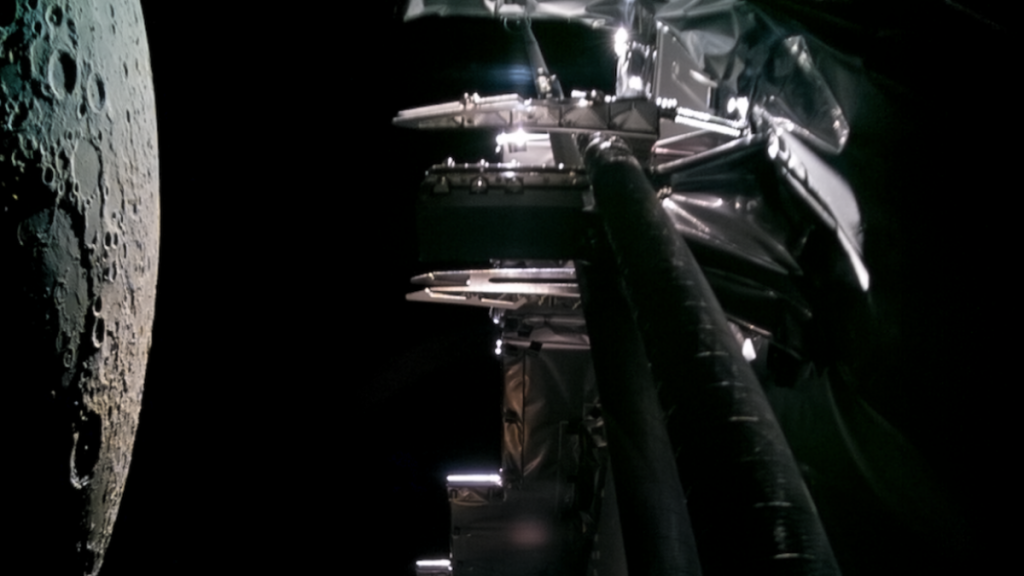
Spacecraft zooms by the moon, captures sci-fi footage (Image Credit: Mashable)
And as it zipped by the cratered lunar orb on Aug. 19, the European Space Agency’s Juice mission snapped views of the 21st-century space scene.
“Sometimes the journey is just as worthy as the destination,” ESA director Josef Aschbacher posted online. “As humankind embarked on the monumental first lunar-Earth flyby, @ESA’s Jupiter Icy Moons Explorer (Juice) mission captured a breathtaking glimpse of our natural satellite.”
Mission planners sent the craft by Earth and the moon to exploit our gravity as it slingshots through space. It will fly by Venus and Earth twice more, picking up speed as it escapes to the distant, icy solar system. Juice is expected to arrive at Jupiter in 2031, where it will swoop by 35 of the gas giant’s icy moons.
The images from the mission’s monitoring cameras show the spacecraft, with its antennae and instruments, in the foreground of the moon vistas.

Credit: ESA / Juice / JMC // Acknowledgement: Simeon Schmauß and Mark McCaughrean (image processing)

Credit: ESA / Juice / JMC // Acknowledgement: Simeon Schmauß and Mark McCaughrean (image processing)
After the successful lunar flyby, Juice will now venture by Earth on Aug. 20.
The spacecraft is shielded from the extreme radiation present around Jupiter, similar to NASA‘s Juno spacecraft. But Juice is bigger. It wields two large cross-shaped solar panels, the biggest ever built for an interplanetary mission, ESA explains. That’s because solar radiation at distant Jupiter, which is on average 484 million miles from the sun, is 25 times weaker than on our planet.
“This makes JUICE the largest ‘solar power plant’ in the Solar System,” ESA wrote. It’s a whopping 71 feet (21.7 meters) wide.
The mission will scrutinize worlds like Europa, an ice-blanketed moon suspected to harbor a voluminous sea beneath its ice shell, as well as the large moons Ganymede and Callisto. They’re not just planetary objects, ESA emphasizes. They’re “possible habitats.”





